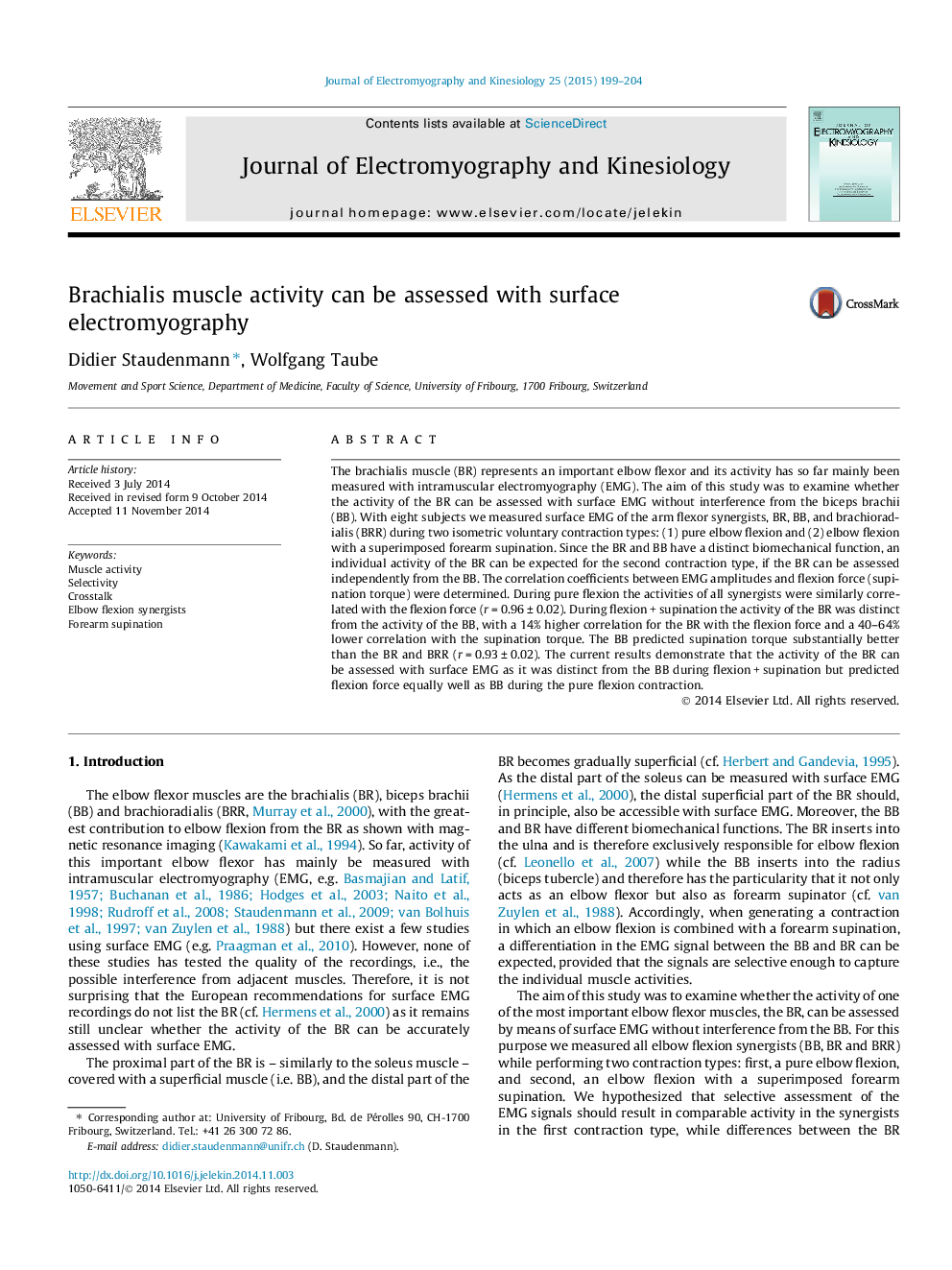| Article ID | Journal | Published Year | Pages | File Type |
|---|---|---|---|---|
| 4064676 | Journal of Electromyography and Kinesiology | 2015 | 6 Pages |
The brachialis muscle (BR) represents an important elbow flexor and its activity has so far mainly been measured with intramuscular electromyography (EMG). The aim of this study was to examine whether the activity of the BR can be assessed with surface EMG without interference from the biceps brachii (BB). With eight subjects we measured surface EMG of the arm flexor synergists, BR, BB, and brachioradialis (BRR) during two isometric voluntary contraction types: (1) pure elbow flexion and (2) elbow flexion with a superimposed forearm supination. Since the BR and BB have a distinct biomechanical function, an individual activity of the BR can be expected for the second contraction type, if the BR can be assessed independently from the BB. The correlation coefficients between EMG amplitudes and flexion force (supination torque) were determined. During pure flexion the activities of all synergists were similarly correlated with the flexion force (r = 0.96 ± 0.02). During flexion + supination the activity of the BR was distinct from the activity of the BB, with a 14% higher correlation for the BR with the flexion force and a 40–64% lower correlation with the supination torque. The BB predicted supination torque substantially better than the BR and BRR (r = 0.93 ± 0.02). The current results demonstrate that the activity of the BR can be assessed with surface EMG as it was distinct from the BB during flexion + supination but predicted flexion force equally well as BB during the pure flexion contraction.
